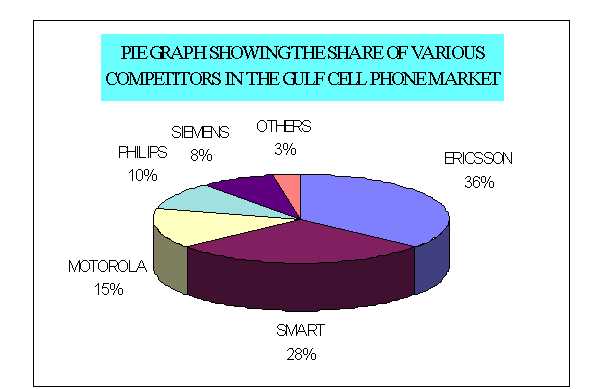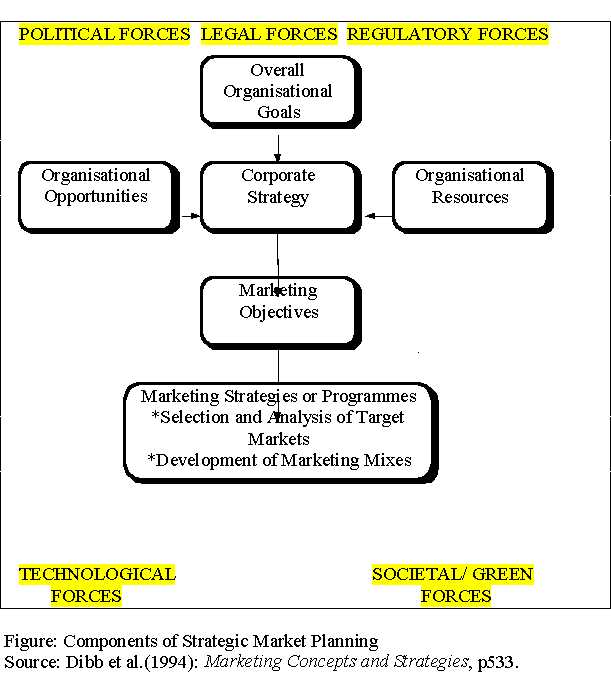mARKETING ASSIGNMENT

Marketing Audit
The following is an extract from a letter sent by a management consultancy company to a industrial company. The consultancy company has undertaken a series of interviews with senior managers on the organisation of marketing activities with a view to helping in the preparation of the current year's marketing strategy.
Mr. XYZ
Managing Director
PQRS Industrial LLC.
ABC Country
Dear XYZ
Further to my recent visits and interviews with managerial personnel, please find a brief resume of our consultant's findings.
1. Poor communication of markting information between and within departments
2. Insufficient interaction between marketing and sales function
3. Limited understanding of customer needs
4. Low awareness of the nature of competitive threats
In view of these observations it is our recommendation that your company conducts a full marketing audit prior to the preparation of this year's marketing plan. This exercise should identify information gaps and help you to appraise future marketing opportunities.
Yours sincerely
Dr. GB
Senior Consultant
Draft out the contents that PQRS Industrial LLC should cover in the marketing audit and explain why it is a useful technique for the company to use.
acknowledgements
I would like to thank Dr. A. K. SRIVASTAVA, my course leader for Marketing for his continuing interest, encouragement, and support in helping me complete this assignment.
We are all influenced by the thoughts and ideas of other people which tend to drift into the subconscious and are not always distinguished clearly from one’s own. I have attempted to give references for sources of work by other writers but apologise to any concerned if acknowledgement has inadvertently not been recorded.
CONTENTS
1. Acknowledgements
2. List of Figures
3. Abstract
4. Introduction
5. The Organisation
6. Objective
7. The Marketing Environment Audit
8. Marketing Strategy Audit
9. Marketing Organisation Audit
10.Marketing Systems Audit
11.Marketing Productivity Audit
12.Marketing Functions Audit
13.Major Overall Findings
14.Recommendations
15.Usefulness of Marketing Audit
16.Conclusion
17.Bibliography
LIST OF FIGURES
1. Pie Graph showing the share of various competitors in the Gulf cell phone market
2. A relative comparison of the various brands of cell phones
3. Bar Graph showing the share of each market in Ali Industrial LLC’s profits.
4. Components of Strategic Market Planning
5. Developing Effective Plans
abstract
A marketing audit systematically examines a marketing group’s objectives, strategic organisation and performances. Unless we have a proper control system to identify our mistakes, we continue to repeat them and the overall performance suffers. A marketing audit aims at identifying the weaknesses and plans the necessary improvements to correct these weaknesses. Just like a financial audit, a marketing audit should be conducted regularly if it is to serve its purpose most effectively. A marketing audit by outside consultants, though more expensive is usually more objective and effective.
In this assignment the various issues of concern being faced by Ali Industrial LLC have been analysed and other latent problems have been revealed. Towards the end, major overall findings have been reported and recommendations, both short term and long-term have been given. Finally the advantages of a marketing audit and its usefulness for Ali Industrial LLC have been explained.
Introduction
As the world in which an organisation functions is highly dynamic, “each company needs to periodically reassess its marketing effectiveness through a strategic instrument known as Marketing Audit.” (Kotler, P., 1995, p101.) A marketing audit is a control mechanism which systematically scans a marketing group’s strategies, organisation and actual performance. A comprehensive marketing audit “evaluates how effectively the marketing organisation performed its assigned functions” (Band, W, A., 1984, p24 cited by Dibb et al., 1994, pP576).
The Organisation
Ali Industrial LLC is a manufacturer of cell phones operating in Muscat, Sultanate of Oman since 1988. Apart from the cell phones Ali Industrial LLC also produces semi-conductors, two way radio systems, paging and data communication systems as well as other wireless communication devices, which however form a minor portion of the total sales. It produces these products under the brand name “ SMART ”. Ali Industrial LLC has twice been the recipient of the ‘Most Innovative Firm- Product Category’ award from the Economic Council of the GCC.
Objective
In this report, I have critically analysed the various problems that Ali Industrial LLC is facing in its total environment. Henceforth I have drafted out the various contents that it should cover in its marketing audit, particularly emphasising the issues of concern raised by the consultancy company, with an aim of identifying key information gaps and weaknesses and giving recommendations for the same.
Part 1 Marketing Environment Audit
Macro Environment
A. Economic: The economic environment of the GCC, which is primarily targeted by Ali Industrial LLC as its market is highly conducive to the company’s successful growth with annual growth rates of GDP ranging between 5.5 % to 10 % (Sharjah Commercial Directory, 1995-1996) and per-capita incomes being amongst the top 10 of the world.
B. Demographic: Though the population in the region is increasing both naturally as well as due to the immigrant population, the company has wrongly assumed it to be a major indication of potential increased demand of its products.
C. Technological: Miniaturisation, the concept of “ small is beautiful ” has also set in the industry and Ali Industrial LLC has strategically used this opportunity and utilised its technological competitive advantage to bring innovative products in the market.
D. Cultural: Mobile phones are not merely identified as a status symbol but have become a part and parcel of everyone’s daily life. They are perceived as a fashion accessory and an ideal gift item among the young, local community. The clear benefits of GSM’s exceptional voice quality, built in security and importantly, the advantages of its international “ roaming capabilities” (Al Qemma, issue 4, p36) have appealed to the population in the region. Using its R&D the company has created a quality position in the minds of its customers.
E. Political: Oman is one of the oldest political entities that has been established in the Arabian Peninsula. Its membership in the GCC was the first step towards economic, social, political and military integration in the Middle East. The government has encouraged the development and modernisation of the country but recently laws have been passed for compulsory employment of the locals even at senior management positions in the private sector throughout the Gulf countries. Public pressure to ban the use of mobile phones while driving has induced the government to think about imposing stricter laws and regulations and increase taxes and tariffs in the near future.
F. Ecological: The local population is highly concerned about environment safety and only companies having a ‘clean and caring’ image win acceptance of the public.
Task Environment
A. Markets: As of January 1998 there were 237,000 mobile phone subscribers in the Sultanate of Oman and the figure is expected to be around 400,000 by the turn of the century, with the Arab region wide subscription base estimated at 2,500,000. The young, single individuals and working middle aged comprise the highest opportunity segment with the market growth rate at around 21% and 14% respectively. There will be a further boost in the market with “the gulf countries giving top priority to the unification of economic markets at regional levels and the development of a Common Arab Market”. (Al Tijarah, April 1997,p7).
B. Competition: The various competitors and their relative market share can be seen in the following diagram:

A relative comparison of the various brands of the cell phones can be seen in the table below
|
Brand Name |
Latest Model |
Price (Dollars) |
Standby Time (Hrs) |
Weight (Grams) |
|
Philips |
Genie |
370 |
75 |
225 |
|
Motorola |
Startac |
440 |
250 |
200 |
|
Ericsson |
E616 |
384 |
100 |
180 |
|
Smart |
8110 |
410 |
200 |
100 |
|
Siemens |
Sinyar |
400 |
150 |
155 |
Apart from the above competitors the company could also face competition from multi-point paging devices with two-way voice transfer facility as well as extended range cordless telephones which could turn out to be potential substitutes for the product in the very near future.
C. Customers: Cell phones are not merely used as a means of communication but are expected to perform a variety of function such as data transfer, scheduling, built-in radio, etc. Though the customers have a favourable opinion about the company’s products and prices, its services and sales team are not considered good enough. Inspite of the fact that the company introduces the latest products in the markets, its marketing research function has done little to actually pinpoint the needs, desires and reasons behind customer’s purchases.
D. Suppliers: The cell phone battery and other component manufacturers are already well established in close proximity and supply raw materials to Ali Industrial LLC on a ‘just-in time’ basis.
E. Distributors and Dealers: Due to its long-term business relationship with Emirates Computers, Ali Industrial LLC distributes its cell phones through the various Emirates Computer branches located in the Gulf region, but in the process has failed to rationally consider other distribution channel options. However the company also directly sells its products to the customers through its sales force.
F. Publics: Though the external publics are satisfied with the company upto some extent, the relation with its internal public is negative.
G. Facilitators: Ali Industrial LLC has its own warehousing facility adjoining the factory premises. Due to the investor confidence in the financial markets resources are easily available by the issue of shares and debentures, and through loans and public deposits.
Part 2 Marketing Strategy Audit
A. Business Mission: The mission of Ali Industrial LLC is to provide top quality, innovative products at lowest prices to their customers.
B. Marketing Objectives and Goals: There seems to be a general vagueness about the mission in terms of marketing and the extent to which it should apply. The top management is oriented towards introducing a product through a push strategy and is mainly concerned with profit possibilities through R&D at the expense of marketing which is treated as a residual activity. The marketing objectives aim at attaining leadership in the local cell phone market, but has been formulated without any proper SWOT analysis.
C. Strategy: The company aims to achieve the above objectives by achieving a competitive advantage through its products. It has, however, allocated just 12% , 8% below the industry average, of its total sales to the marketing budget. Even the sales force, which has been allocated most of the marketing budget, have not shown any remarkable performance. The cost elements of the Marketing Mix are highly biased in favour of the product quality. Service, advertisement and other promotions have been mainly ignored,
Part 3 Marketing Organisation Audit
A. Formal Structure: The marketing organisation is headed by a person having little experience in the marketing field. Reporting to the marketing manager is the sales manager, the market research manager and the advertisement manager. Having come up from the ranks in the production department the marketing head is biased in favour of the product quality and pays little attention to other, equally important, marketing function. The sales force, headed by area managers, is haphazardly assigned different products and territories.
B. Functional Efficiency: There seems to be a communication gap between the marketing and sales department. The sales force often complain about giving them unrealistic goals to achieve, poor compensation schemes and lack of adequate advertisement. The sales force certainly needs to be trained in modern merchandising and selling techniques such as the FAB (Features, Advantage and Benefits) technique.
C. Interface Efficiency: The inter department communication suffers from a series of issues. The management being highly biased towards the quality of the product fully ignores the issues of concern raised by the marketing research and advertisement manager. Moreover, problems have arisen within the marketing department due to the limited understanding of consumer needs and inadequate supporting tools for the sales team.
Part 4 Marketing Systems Audit

